Molluscum Contagiosum Natural Treatment – Know The Causes, Symptoms, Stages & Treatment
Have the bumps and lesions on your skin been provoking you to scratch them? Here are some best home remedies for Molluscum contagiosum natural treatment to help you say goodbye to the most irritating skin problem that gets you on your nerves!
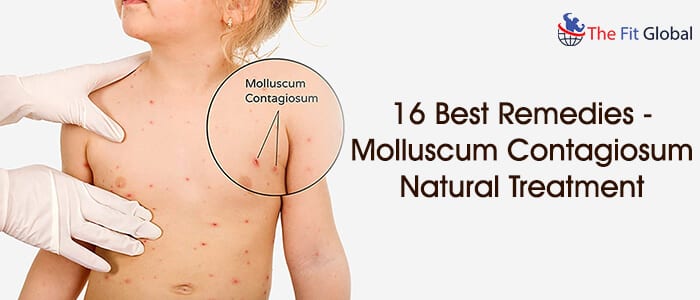
What Is Molluscum Contagiosum?
If you love enjoying water rides, chances are you might get attacked with Molluscum contagiosum (also called water warts) which is a contagious disease caused by a pox virus called Molluscum contagiosum.
You may develop some painless, red and itchy bumps on your skin which are so contagious that they can spread to other parts of your skin when scratched but water is not the only source that spreads the disease.
The disease is also a sexually transmitted one and it can also spread through the usage of contaminated objects. There are other potential causes of Molluscum contagiosum that you are going to discover later in the article.
Molluscum Contagiosum Symptoms
You need not really worry if your child or yourself have developed the disease because molluscum contagiosum symptoms usually go away after a few months (7-8 months).
You can opt for a process of molluscum contagiosum treatment with the help of 15 amazing remedies mentioned in this article.
If you feel that there is an emergency need to get the annoyable bumps removed, you can go for a Molluscum contagiosum treatment where clinical methods are applied to remove the bumps from your skin.
Here are some molluscum contagiosum symptoms to help you in an easy identification.
- They appear like bumps (raised above from the skin surface)
- The bumps raise up to a quarter inch and the diameter is usually less than 6mm.
- The lesions can appear red and swollen and may seem excessively itchy.
- The most prominent mark of identification is that the lesions show a tiny dot like structure at the centre.
- If the infection attacks the children, lesions can develop on the hands, feet, face, on the arms or under the armpits.
- If the infection occurs in adults, lesions will more commonly appear on the lower part of the abdomen, inside the upper thighs or on the genitals.
- They appear like waxy outgrowths and can become soft as time passes by.
The lesions once developed may take several months or in some cases one year to disappear completely but you can try with these 15 home remedies as a part of molluscum contagiosum natural treatment for a quick recovery.
If there is some serious underlying cause such as a problem with the immune system, molluscum contagiosum symptoms can stay for a lifetime.
Molluscum Contagiosum Causes – Know The Cause For An Effective Treatment!
The virus can attack people of any age group but it is more common to attack children or people with a very low immunity. Here are some habitual causes of the disease that are needed to be addressed immediately!
However, you can choose to cure yourself with a well-planned molluscum contagiosum treatment whatever might be the cause.
1. Spending Time In Crowded Places

Since the disease is highly contagious, people who get infected more commonly are those who live in highly crowded areas.
Living in colleges, boarding schools, apartments or other residential places that are overly crowded might help the virus to spread much quicker.
Kids who live in daycare centres are at a high risk when compared to others.
2. May Infect People Suffering From Atopic Dermatitis (Eczema)
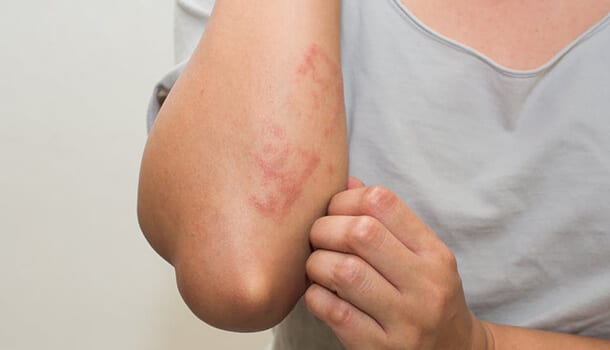
Molluscum contagiosum is more commonly said to attack people with excessively dry skin, more particularly people suffering from a skin disorder like eczema.
Eczema shows the symptoms of red coloured patches that may develop anywhere on the skin like hands, feet, upper part of the chest, on the wrist or on the ankles.
The emergence of bumps and a dry, scaly skin can also be seen in those suffering from eczema.
Read More: Cure Molluscum Contagiosum Naturally
3. Sexual Transmission

Most of the molluscum contagiosum causes in adults are sexual transmissions. Getting sexually involved with the person who might have already been infected can spread the disease to the significant other.
Having multiple sex partners is also one of the causes of the disease. Such people may develop the lesions in the inner regions of their thighs, or on their genital organs.
4. Unhygienic Conditions
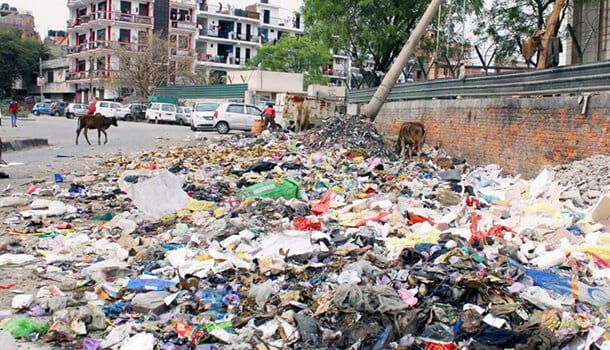
It is a must that you take appropriate measures to stay clean as soon as you utilize the public washrooms to prevent the attack of the virus.
The virus may also spread through the exchange of some accessories like hair brushes, towels or through other service centres like gym centres or beauty parlours that have been infested with the virus.
5.Climatic Conditions

There is a higher risk for the people residing in the areas with tropical climate since the virus can spread much easily in a hot and humid condition.
Try staying clean and hygienic and wash your skin much frequently during hot and humid climatic conditions to prevent the occurrence of the disease.
Everything About The Four Molluscum Contagiosum Stages
1.Papules – Stage One
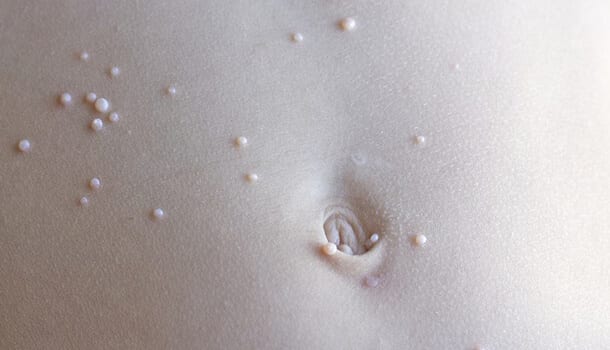
The first stage of molluscum contagiosum can be identified by the occurrence of small papules like structures that can pop up anywhere on your body.
The papules do not seem red or inflamed when they first appear but you will see a group of papules growing together in a particular area of your skin.
The papules may be recognized only after a close observation as their colour is similar to that of the skin and as they appear small in size.
You must immediately consult your doctor after you observe the emergence of papules.
2.Development Of Bumps- Stage Two
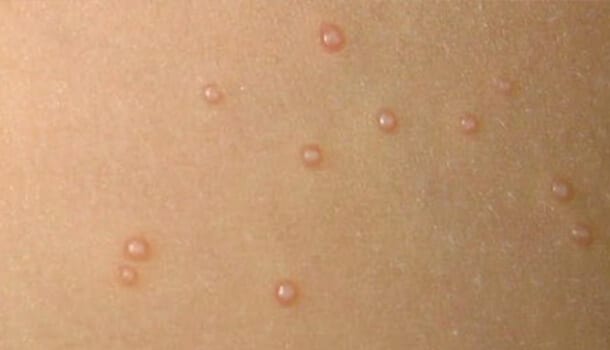
This is the second stage of the disease where you may see the emergence of tiny bumps that can be easily identified because of the formation of a red outline around the bumps.
Continue using the prescribed creams and ointments by your doctor while following molluscum contagiosum treatment at home.
3.Purulent (Bumps Containing Pus) – Stage Three
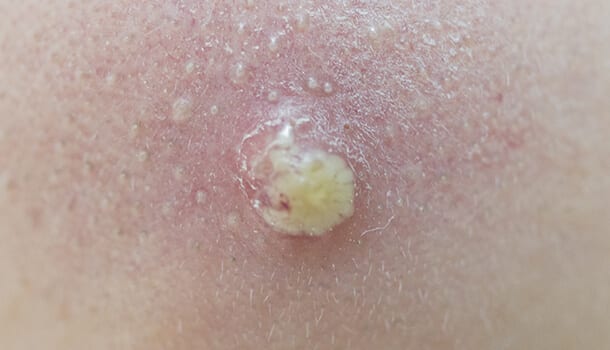
Stage three of molluscum contagiosum shows the most significant symptom which is the emergence of tiny and red dot like structure on the centre of each bump.
The bumps are usually filled with a liquid like pus during this stage but you need not panic much as these are only temporary.
They will eventually turn into the fourth stage of the disease and fade away later. Make sure you do not scratch them as this can cause the infection to spread to other parts of your body.
The stage can definitely be soothed by following certain home remedies but If you feel that this stage of molluscum contagiosum takes much time to heal with a natural treatment, you can opt to go for clinical treatment where the pus is removed by applying certain methods.
4. Bursts – Stage Four
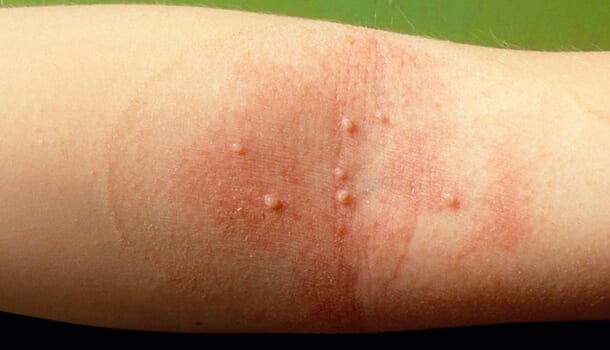
The last one of the molluscum contagiosum stages may occur due to an excessive scratching which causes the bumps to burst.
You may be compelled to scratch the lesions but you can resist yourself if you go for a molluscum contagiosum treatment using the best home remedies that will soothe the inflammation and itchiness.
You must essentially keep your hands away from the affected area to prevent the further spread of infection to other parts of your body.
Molluscum Contagiosum Natural Treatment
If you are looking for some best home treatment methods to get rid of the skin disorder, these natural remedies for molluscum contagiosum are to soothe you in the best possible way.
1. Do Not Act In Haste
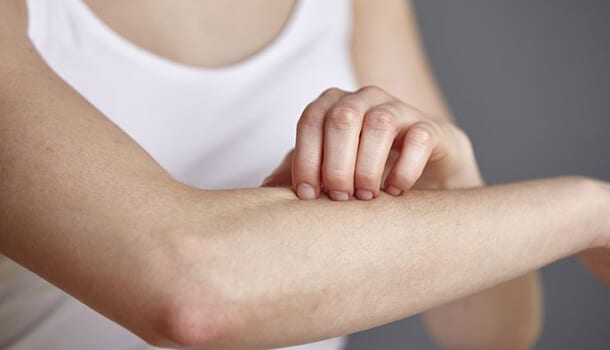
The primary measure that you need to take as a part of molluscum contagiosum treatment is to keep your hands away from the infected area.
Most of the people try to prick the lesions or scratch them out of itchiness which is the biggest mistake that might cause the infection to spread all over the body making the condition worse.
The best thing you can do is to understand that the symptoms are sure to disappear by themselves after a few months and acting in haste is only going to make your condition worse.
2. Coconut Oil To Soothe The Itchiness
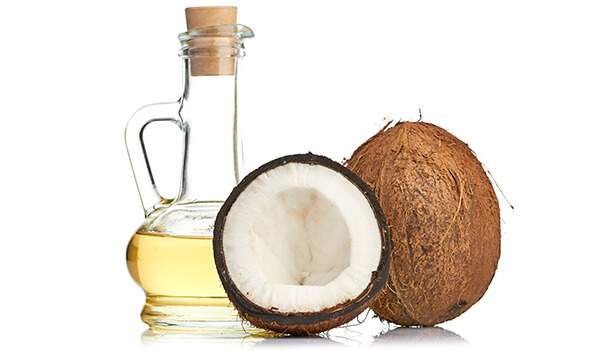
One best ingredient that is readily available for Molluscum contagiosum treatment is coconut oil. (1)
Most of the people are not aware that coconut oil is the best remedy for treating viral infections but coconut oil contains triglycerides (fatty acids) which contain medicinal properties that help in healing viral skin infections.(2)
These types of fats are essentially known as medium chain triglycerides that make the healing process fast.
How To Apply?
Take some coconut oil and rub it against your palms and forefingers. Use your forefingers to rub the oil into the infected skin parts.(3)
Do not apply much pressure and ensure that you wash your hands after the application to prevent the spread of the virus.
3. How To Get Rid Of Molluscum Contagiosum Using Tea Tree Oil?
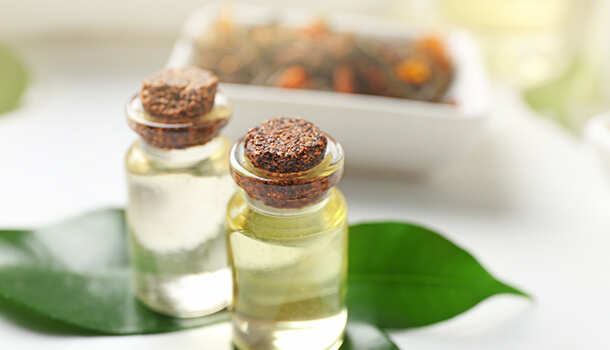
The reason why tea tree oil works as the best molluscum contagiosum home remedy is that it is especially used to treat the infections such as warts because of its rich antiviral properties.
The healing property of tea tree oil is the main reason why the ingredient is used in the preparation of certain lotions, shampoos and detergents.
The oil is available in various concentrations which is designated by the number present from 5% to 100%.
How To Apply?
Apply a patch test using tea tree oil to check whether you are safe to use the oil for your skin. Perform a patch test on your arm for a better result.
If you have chosen tea tree oil of high concentration, ensure that you mix it with a carrier oil. Using tea tree oil directly on your skin may cause rashes. You can choose any carrier oil like that of a coconut oil or almond oil.
Dip a cotton ball in a cup of tea tree oil mixed with a carrier oil and rub it over the infected area at least 4-5 times in a day.
4. Australian Lemon Myrtle
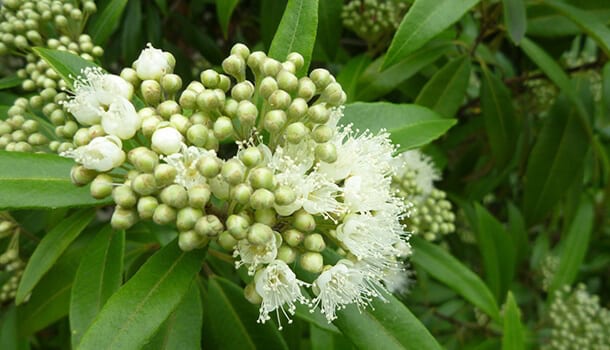
Australian lemon myrtle is a type of essential oil that has been extracted from a plant named lemon myrtle.
There was research conducted amongst the group of children who suffered from molluscum contagiosum using lemon myrtle oil.
Results have proved that the molluscum contagiosum symptoms were reduced to a maximum extent in children who were treated with Australian lemon myrtle when compared to other children who were put under placebo effect.
This is because lemon myrtle oil contains anti-microbial properties that help in an effective treatment.
How To Apply?
Lemon myrtle oil undoubtedly works the best as molluscum contagiosum treatment but the oil may be highly concentrated which is why you must mix the oil with a carrier oil to prevent any side effects.
Mix one teaspoon of Australian lemon myrtle oil with two tablespoons of carrier oil (olive oil) and use a cotton ball to gently rub the oil on the infected parts of your skin.
Apply the remedy at least 4-5 times in a day for a quick result.
5. Apple Cider Vinegar
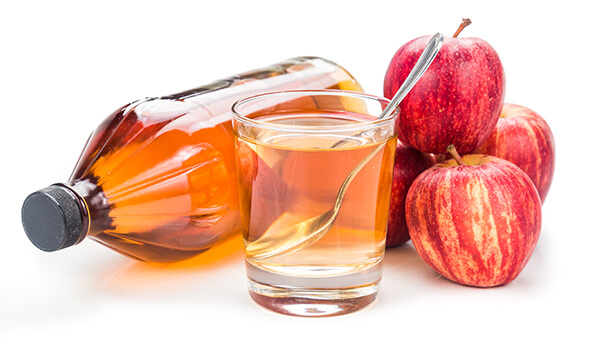
Apple cider vinegar is used to treat most of the viral warts which makes it one of the most commonly used natural remedies for molluscum contagiosum.
The healing property of the liquid lies in the acidic property of the liquid. Acetic acid (vinegar) present in apple cider vinegar helps in reducing the activity of microbes thereby helping in a quick recovery.(4) (5)
How To Apply?
Mix 2-3 teaspoons of apple cider vinegar in two tablespoons of water and use a cotton ball to apply this mixture over the area that has developed lesions.
Repeat doing this 4-5 times in a day as Molluscum contagiosum remedy.
6. How To Use Neem For Molluscum Contagiosum Treatment?
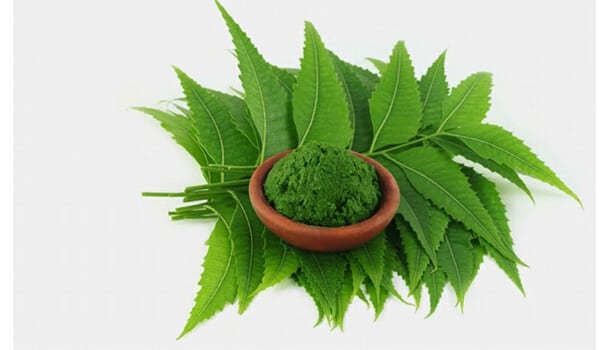
Neem leaves have been exclusively put into use for the purpose of treating skin disorders because of the presence of anti-microbial properties that help in mitigating the viral activity of Molluscum, thereby causing the bumps to disappear soon.
How To Apply?
Boil some fresh neem leaves in water until the leaves absorb the essence of neem. Collect the water and discard the leaves!
Let the water cool and use a cotton ball to dip it in the water after which you can gently rub it over your skin.
Continue doing this for at least 4-5 times in a day!
7. Aloe-Vera Gel For Molluscum Contagiosum Treatment
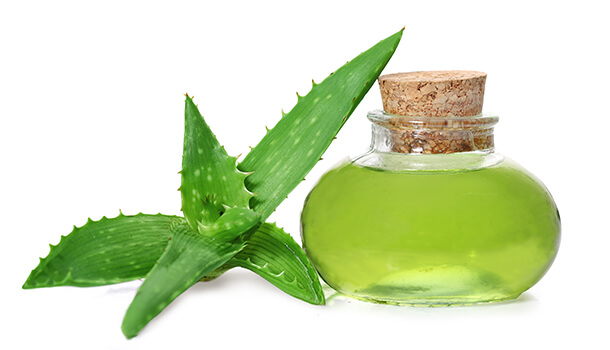
It is best to grow an Aloe-Vera plant at your home so that it is always readily available to be used for treating skin infections.(6)
The leaves of this plant are highly medicinal, enriched with anti-microbial and anti-inflammatory properties which makes it the best choice for molluscum contagiosum cure.(7)
How To Apply?
Cut the leaf of the plant and extract the gel from the leaf using a knife. Try using gloves since the gel is too slimy.
Collect the gel into a bowl and use your forefingers to rub the gel on to the affected parts of your skin and leave it for one to two hours.
Rinse it with distilled water and use a fresh cotton ball to cleanse the lesions. The anti-inflammatory properties of the gel help in relieving you from the itchiness and inflammation.
Follow the remedy twice in a week for better results.
8. Calendula Oil For Molluscum Contagiosum Natural treatment
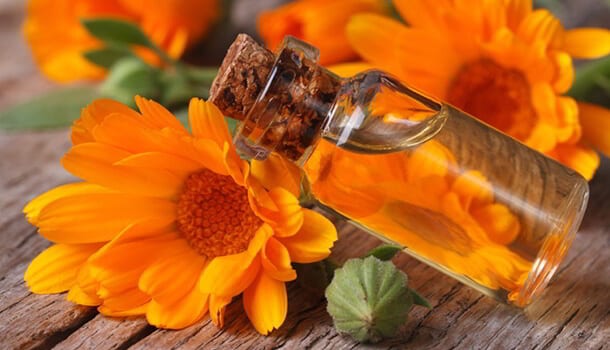
The oil is a product of marigold flower which is a native to European countries. But you can see the flowers growing across the globe.
You can buy the oil from various retail stores if you are looking for an easy way to buy the oil. Calendula oil is said to contain anti-inflammatory and anti-microbial properties which assist in an easy treatment.
The oil is so effective for skin, it has been used for treating the most common skin disorders like eczema and molluscum contagiosum.
You can either use calendula oil or prepare calendula crème for treating the bumps and lesions.
How To Make Calendula Oil?
Collect olive oil in a glass bottle and place some dry and old marigold flowers in this bottle.
Preserve the bottle by keeping it in a dark room for a time period of fifteen days. Keep shaking the bottle twice in a day. After fifteen days of storing the bottle, you can discard the flowers using a mesh and collect the oil into a separate bottle for further usage.
Take little amounts of calendula oil and mix one teaspoon of vitamin E oil into this. Use a cotton ball to apply the oil to the infected area 4-5 times in a day.
How To Make Calendula Crème?
Ingredients Required
Calendula oil – 180 ml
Cocoa butter – 60 ml
Sweet almond oil – 60 ml
Shea butter – 90 ml
Mix all the ingredients in a saucepan and heat them up to twenty minutes until a smooth crème is formed.
Let the cream become cool after which you can apply it over the affected area and gently rub it until it gets absorbed into your skin.
9. Rubbing Alcohol (Isopropyl Alcohol)
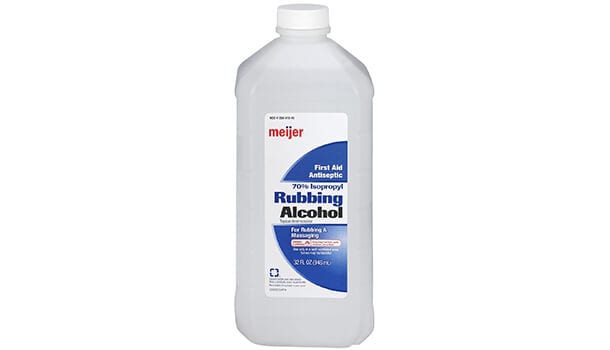
Do you know that most of the hand sanitizers are formulated using alcohol as one of the ingredients? This is because alcohols can help in eradicating bacteria and viruses and keep your skin fresh and clean.
In fact, they are said to be much more effective than soaps and other hand washes. You can ask for a rubbing alcohol at your nearby medical stores and keep it handy to treat viral skin infections.
How To Apply?
Conduct a patch test on your forearm before directly applying the alcohol on the lesions. Take little amounts of alcohol onto a cotton pad and gently swipe this over your lesions or bumps.
Repeat this twice in a day to reduce the itchiness and inflammation.
10. Melaleuca Alternifolia Leaf Oil And Iodine
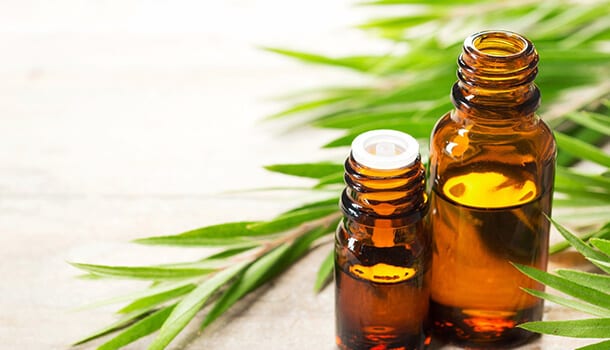
The essential oil that is extracted from the leaves of Melaleuca alternifolia (8) is nothing but tea tree oil. Fortunately, the oil worked the best for molluscum contagiosum treatment when mixed with iodine
Tea tree oil can individually work as the best remedy for viral skin infections but using iodine tincture along with it helps in showing quick results since iodine is antiseptic in nature.
How To Apply?
This remedy works best when followed every night before going to sleep and after waking up early in the morning.
Take a few drops of iodine tincture and apply it directly to the lesions. Wait for a few minutes until the iodine gets dried. Apply two to three drops of tea tree oil using a cotton swab and let it remain on the wound for a few hours.
Follow the remedy regularly to obtain a relief from the itching sensation. You may see the bumps fading away after several weeks of application.(9)
11. Try Using Elderberry Extract
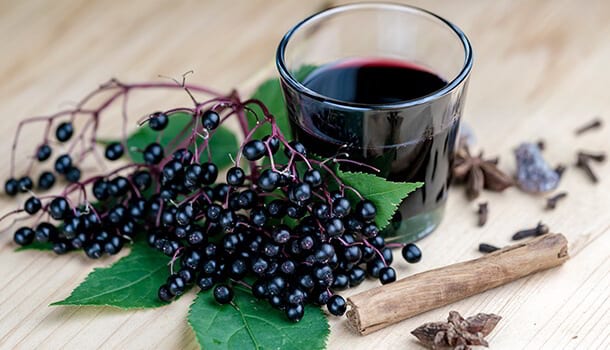
Elderberries are particularly used for treating skin infections because of their high medicinal properties. The fruits are particularly known for their rich medicinal value and the healing power is so strong, they are used by people suffering from AIDS.
You can either take elderberry syrup orally or apply the elderberry extract on your skin externally. If you are looking for ways to take the medicine orally, do not take more than one tablespoon per day for not more than a week.
Consult your physician to know the exact dosage of elderberry to prevent any side effects.
How To Apply Elderberry Extract?
You can directly apply the elderberry extract on to your skin using a cotton ball or a cotton swab. Follow the remedy twice in a day for best results.
12. Catechu For Molluscum Contagiosum Treatment
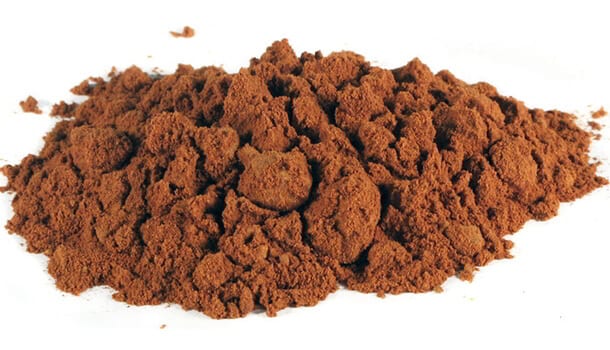
Catechu is an extract derived from the trees of Indian acacia and this product is used for a wide range of purposes like tanning, dying and used in various foods as an additive.
The product is said to have strong astringent properties which make catechu an exceptional remedy for Molluscum contagiosum natural treatment.
How To Apply?
Take the required amounts of catechu powder and mix this in the right amounts of water to form a smooth paste.
Apply this paste on to the bumps and leave it for half an hour until it becomes dry after which you can rinse it off using water.
13. How To Use Oregano Oil As Molluscum Contagiosum Home Remedy?
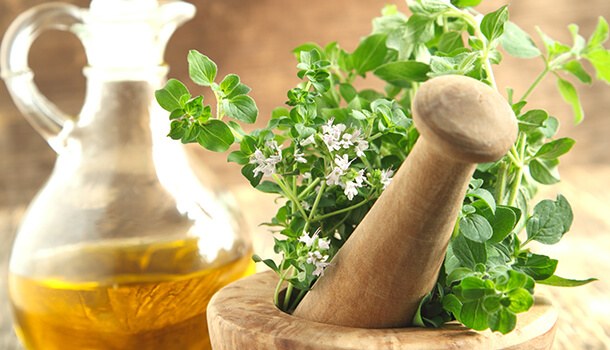
Oregano plant is a native to Europe but you can see the plants growing all across the world. There are three major ingredients Rosmarinic acid, carvacrol and thymol in oregano oil that make it a powerful healing potion.
These components are naturally rich in antioxidants, antifungal in nature and they stop the growth of harmful bacteria which will help in a faster healing of bumps and lesions.
How To Apply?
You must be careful while using oregano oil on the skin since the oil is too high in concentration. Make sure that you mix the oil with any carrier oil like olive oil to dilute it.
The dilution should be such that you mix one drop of oil with at least one tablespoon of olive oil. Rub the oil onto the lesions using a cotton ball and let it stay for at least one to two hours.
14. Colloidal Oatmeal Bath
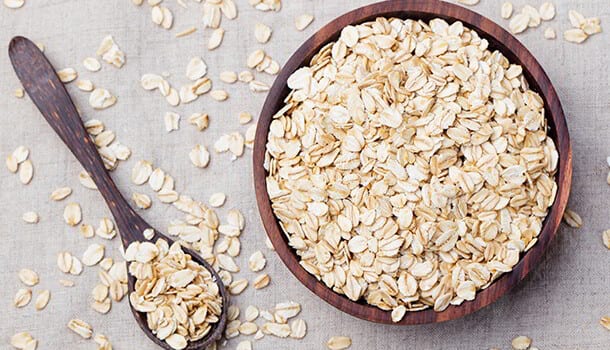
The presence of fatty acids in oatmeal is what makes a colloidal oatmeal bath a soothing treatment to your skin because of its anti-inflammatory properties.
One thing you must keep in mind is that a colloidal oatmeal bath can cause excessive dryness to your skin which is why a colloidal oatmeal bath should not last longer than 10-15 minutes.
How To Make?
- The oatmeal that we consume is totally different from the oatmeal that is used to bath. The one that is used for bathing is known as colloidal oatmeal which you can buy at your nearby drugstores or at online retail websites.
- Take approximately 250 grams of oatmeal in a separate cup and fill your bathtub with lukewarm water. (Remember that the water must be essentially lukewarm as hot water increases the dryness, itchiness and inflammation).
- Pour the oatmeal powder into the bathtub and mix it well.
- Immerse yourself into the tub containing water mixed with oatmeal and rest for about 10-15 minutes and not more than that.
- Pat your skin dry with a clean towel and apply a suitable moisturizer.
15. Clove Oil For Molluscum Contagiosum Cure
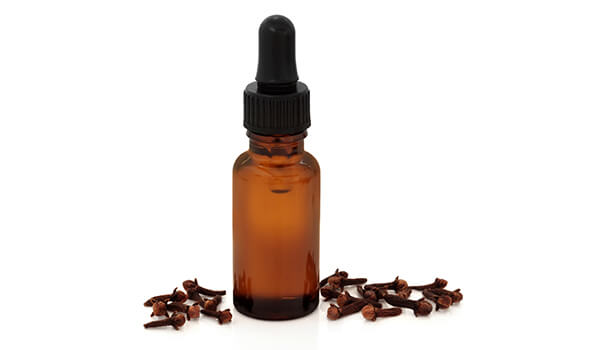
The oil is said to contain strong antimicrobial properties that help in the treatment of various viral and fungal infections.(10)
Clove essential oil is not only used for treating skin infections, but it can also work the best for maintenance of a good oral hygiene, for a good hair growth and works effectively on pregnant women.(11)
How To Apply Clove Oil?
Mix one teaspoon of clove essential oil with a tablespoon of any carrier oil like olive oil. Use a cotton ball to apply the oil on to your infected area and let it stay for one to two hours.
Continue doing this for 4-5 times in a day to see a gradual decrease in the itchiness and inflammation.

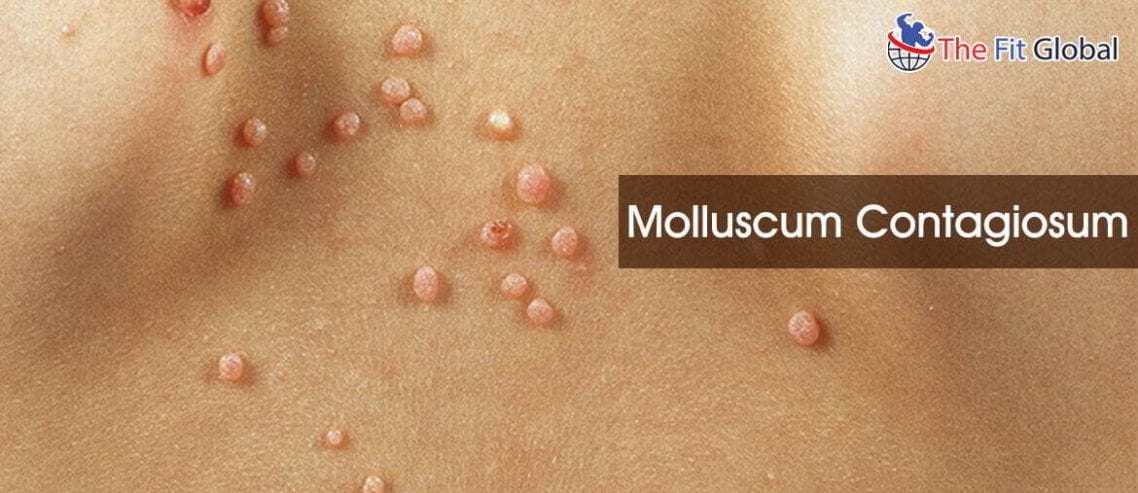

Comments
1 Comment
Thank you so much… Can these things be applied to a molluscum contasiogum in the vaginal region?
Leave a Comment